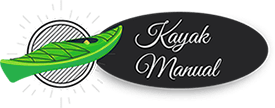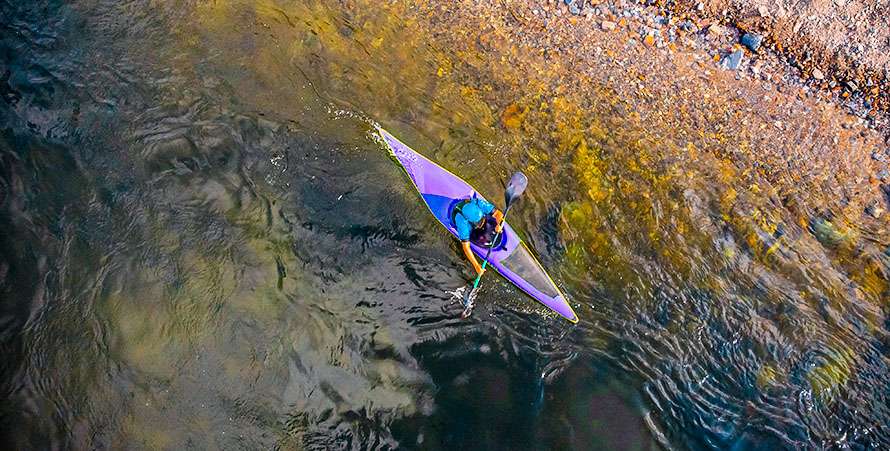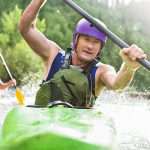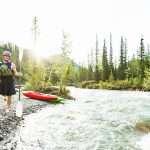Do you see some of the best paddlers taking half the number of strokes to do the same move you struggle through? Perhaps these paddlers have learned to maximize their stroke. If done efficiently, “less equals more” when counting whitewater strokes.
The catch is the most critical phase of your forward stroke. Pause at the beginning of each stroke and focus on putting the blade cleanly in the water. Practicing this pause is a great way to focus on and improve your catch.
You’ll get the most distance from each stroke if the tip of the blade grabs water near your toes. Avoid splash by immersing the entire blade before you start to pull. The best way to get a good catch is to extend far forward by rotating your torso, and pressing down on the blade before you pull back. Pressing down works best if you have ample flexibility for an aggressive forward-tilted posture. If the idea of pushing down to catch doesn’t work for you, think of sliding the whole blade into a sheath before you pull back.
Take your top shoulder and elbow back so you can extend the tip of the blade forward. If the paddle pivots at the top hand, the blade pulls water efficiently throughout the stroke. If you pivot at the bottom hand, like when you punch, then your stroke is much less effective. To put this into practice, think about driving your top shoulder forward rather than punching your top hand out.
How Vertical a Stroke?
For pure acceleration, you’ll want a vertical shaft. Once you get a little speed, you can drop your hand to eye level. This gives you a nice traveling stroke, with lots of torso movement and good quickness between strokes. Most of your strokes will be traveling strokes with the blade a few inches out from the side of the boat, which allows you to steer efficiently, with quick and easy adjustments.
In all your strokework, don’t forget to strive to get power from torso windup and rotation. Then work on transferring power through your pelvis into your feet and into the boat.
Stroke Placement
By carefully placing your strokes, you’ll get the most out of each one. Many paddlers miss the ideal stroke placement because they take too many strokes. Generally, fewer strokes is better, unless you need a flurry to surf, to bust through a hole or to catch an eddy. Some energy-saving stroke placement advice:
- If you need two strokes on one side, take them, rather than taking a half stroke or an air stroke. Multiple strokes on one side can be a sign of thoughtful stroke placement.
- You can save strokes when crossing a river by planting a key stroke when perpendicular to the current, so that you get more lateral movement across the current.
- When pulling through a hydraulic, reach through the foam pile of a hole to get solid purchase on less aerated water.



